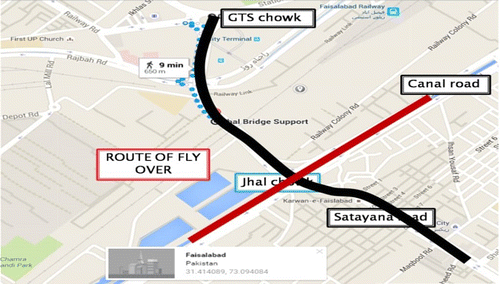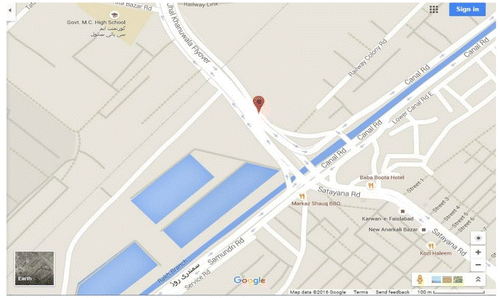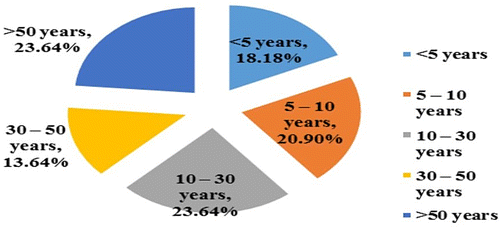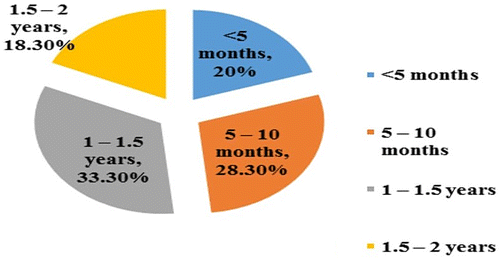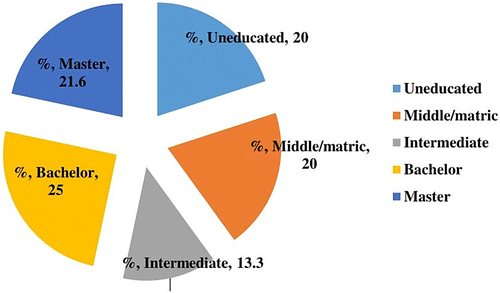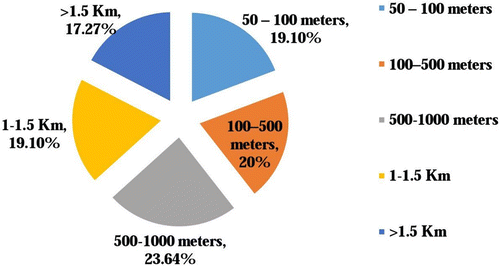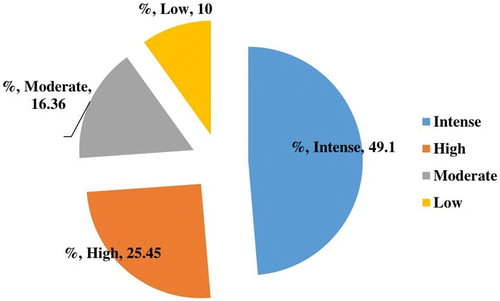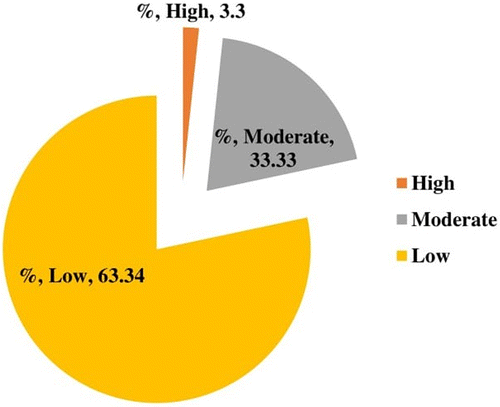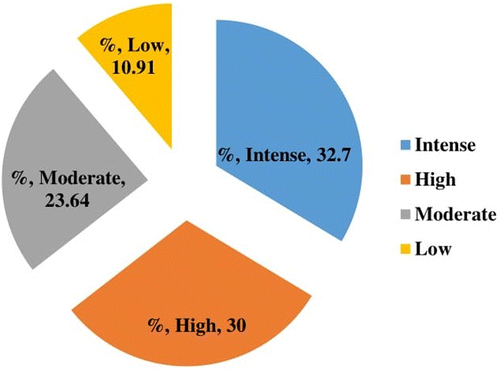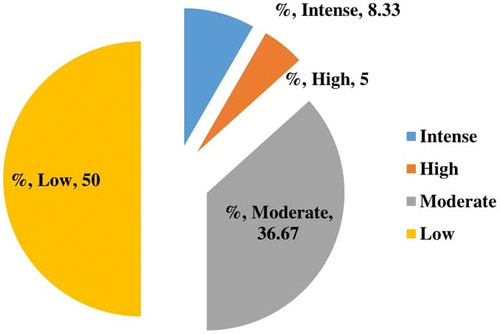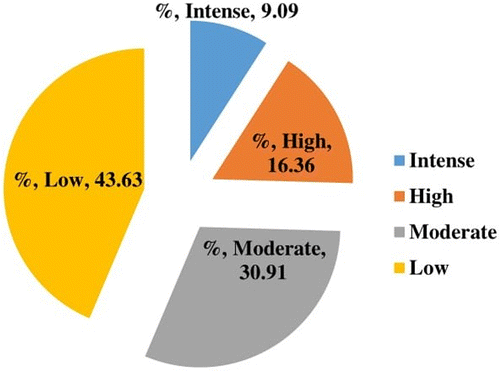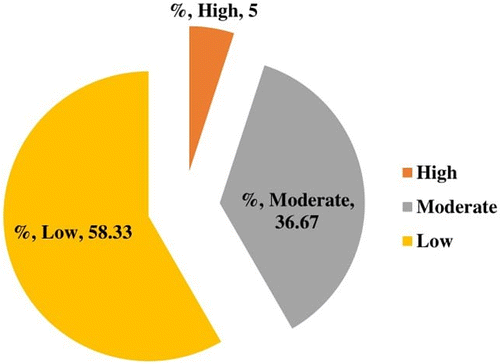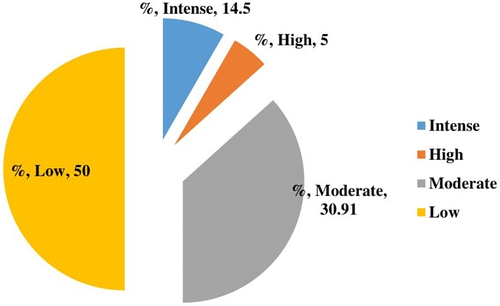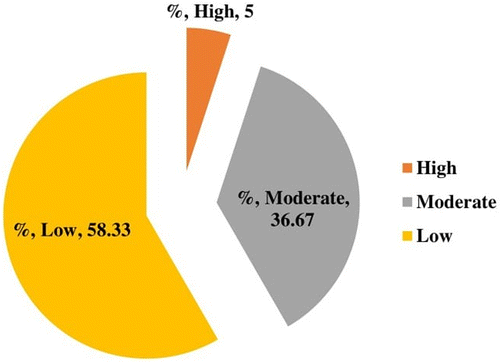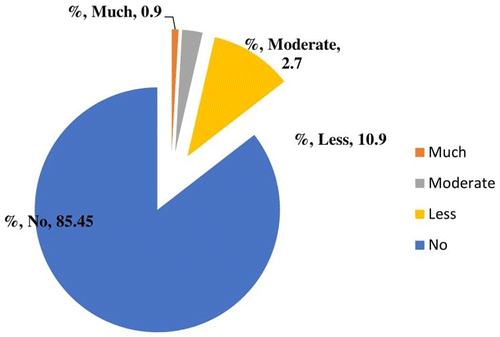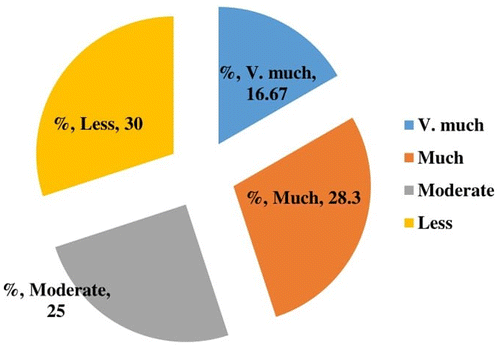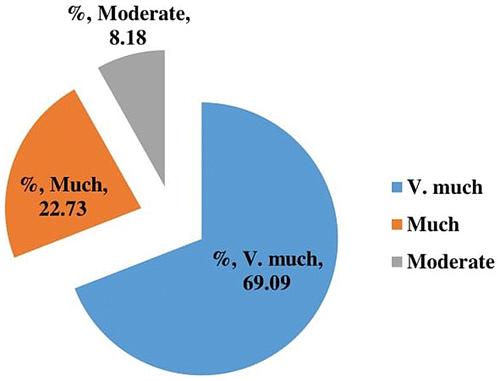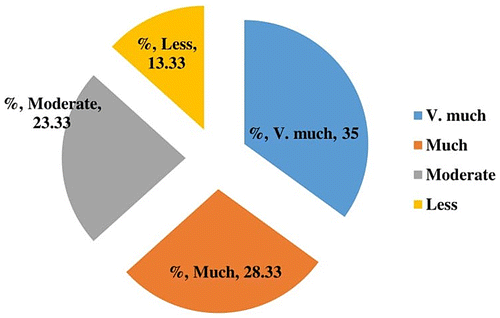Abstract
In order to facilitate the study and estimate the environmental impacts of any developmental project, Environmental Impact Assessment (EIA) is a compulsory component for implementation of the project. EIA is the basic requirement for environmental assessment of any project. The EIA structure of Pakistan is functioning under a convincingly powerful legal envelop supplemented with a complete parcel of EIA guidelines. In Faisalabad city, a mega project of flyover and underpass is under construction with the purpose to overcome the heavy traffic load from different areas of the city. This research is based on defining the parameters for conducting project to minimize the adverse effects of the project. Based on the objective of research, the most appropriate methodology was finalized and further research procedures were adopted in order to find out the basic parameters required for this running project. This research covers a wide area which has been investigated for the potential environmental impacts of the project identifies significant parameters regarding environmental degradation and proposed plan for mitigation of these compliances.
1. Introduction
Rapid increase in population and economy is the major challenge facing by Pakistan. Road projects are planned to improve the economic and social prosperity of the people. Along with the positive aspects, it also has some negative impacts on the nearby communities and also on environment (Imran, Citation2009). Construction of new roads provides a pathway for the development of undeveloped areas, which can significantly affect the natural environment and also the life of the people (Imran & Low, Citation2007). Roads can be responsible for benefits and also damages to the presented balance among the people and the environment (Imran, Citation2009). Roads allow smooth movement of local people and goods from one place to another. Because of the rapidly increasing population, roads have also been expanding day by day (Imran, Citation2010).
Motorized transportation is considered as the necessary part of life that is contributing to economic development and quality of life (Imran & Low, Citation2007). Objectives of a highway or road development may include improve trade actions in the state, provide secure, high pace and time reduction passage to the passers or travellers, improve the effectiveness of road association; and lessen the amount of accidents (Japan International Cooperation Agency et al., Citation2004).
Environmental Impact Assessment (EIA) as a whole is a procedure of collecting data about a plan or a project, its potential and possible effects, and the study of data collected from all sources (Aslam, Citation2006). Here, is no exact definition of EIA as a particular perception. It’s a composite term embodying plans/thoughts and techniques that have been developed over many years of growing, concern among the terrible results of man’s intrusion with environment (Fortlage, Citation1990). It is helpful in relating the environmental situation to think and arranging different factors into the following categories: physical/chemical, ecological/biological, aesthetics/cultural and social/socio-economic (Canter, Citation1977). Particular EIA procedures differ among countries but there exist some definite core fundamentals from which general issues happen. These contain screening, scoping, construction of an EIS, baseline Studies, review and decision (Glasson, Therivel, & Chadwick, Citation2002).
EIA is required to be submitted to the Environmental Protection Agency (EPA) before the starting of developmental project. To save the environment, EIA for different developmental projects is necessary so to maintain long-lasting project goals, but it is hardly fulfilled in the developing countries as Pakistan (Aslam, Citation2006). This EIA report has arranged according to the World Bank Optional Policies OP-4.01. Along with the World Bank strategy for Road project the major environmental issues relate to crash on precious ecology, historical, cultural, monuments areas, fisheries and aquatic ecosystem, siltation, aesthetics, noise and shaking, air effluence, run off toxic waste and spills of dangerous materials (Ziai, Citation1995). Pakistan has followed the environmental legislation in the form of EIA (Pakistan Government, Citation2000).In most of the research works two main methods could be useful in assembling of facts and figures (Fielding & Fielding, Citation1986).The methods can be either by questionnaire approaches or interviews. The main aim of the questionnaire survey was to authenticate the information, which were found in the literature study and to discover out different proponents opinions (MacRae, Citation1966).
Considering the need of conducting EIA, it is important to define the basic parameters which may be significant regarding their impact on environment and furthermore to develop guidelines for this purpose (Nadeem & Hameed, Citation2006). The mega project of Jhal flyover and underpass in Faisalabad city is expected to have very significant impact on environment. These impacts will be not only due to air and noise pollution but also due to mass mobilization and hydrological conditions variation in the area. Therefore in order to study all these basic parameters and development of guidelines for EIA, this research work is planned considering the following objects as described.
There are a lot of environmental problems in the urban centres of the country such as water pollution, air pollution and noise pollution. The purpose is to reduce the effect on environment. It is unlucky that programmes to manage the environmental contamination have established the lowest precedence in other countries of the world. An elongated planning is consequently very essential for the removal of the waste in the construction of any project. Proper site assortment criteria may be employed for the assortment of the proper sites and ecological control procedures should be adopted to look after the environment and the individual aspects. The main purpose of this learning is to classify diverse factors and EIA of those factors. A complete check list was prepared to be used under confined conditions beside with the mitigation procedures with taking into account the EIA aspects. The main objectives of this research work are to define basic parameters for conducting project, to propose mitigation procedures for minimizing the adverse effects of developmental project and to select most appropriate method for developing guidelines. Figure illustrates Solid Waste at Project Site.
2. Materials and methods
2.1. Description of study area
Faisalabad is located in undulating levelled surface of the north-east Punjab, having longitude 73°74 east and latitude 30°31.5 north, with a height of 184 m or 604 ft. beyond the main sea level (Wikipedia, Citation2017). Main Jhal Chowk is the intersection of Samundri Road and Satyana Road. Figure depicts the map of study area in Faisalabad.
Jhal Khanuana Chowk was a signalized intersection between Satiana Road and Road along canal leading to Lahore on north-west side and Samundari on south-east side. Long Traffic queues at the signal are observed causing traffic delays at the junction. This traffic jams not only increases the travel time but at the same time causes environmental and noise pollution. In particular, the commuters travelling from GTS Chowk to residential areas like Peoples Colony on Satiana road face delays at the intersection (Maps, Citation2016). Figure depicts the study area (Jhal project) in Faisalabad Therefore, a two lane Underpass along either side of canal and a flyover (From GTS Chowk to Samundri side) to give signal free facility to Lahore and Samundri bound through traffic. This will provide a relief to the Traffic crossing the junction. This will reduce travel time, environmental and noise pollution (Maps, Citation2016).
2.2. Research design
It refers to the approach that is used to incorporate the different elements of study in rational and logical method. It was a quantitative study in nature (Cohen, Manion, & Morrison, Citation2005).
2.2.1. Sampling
The population of sample for the study was 200 respondents of project area and its surrounding i.e. Jhal underpass and flyover project Faisalabad but 170 samples were in proper form so the results were made based on those 170 samples in which 110 were the local people (i.e. residents, shopkeepers, rickshaw drivers, etc.) and remaining 60 were the working staff (i.e. surveyor, site engineer, labour, etc.).
2.2.2. Sampling procedure
Random sampling technique was used for sampling process. The population of sample for the study was 170 respondents of nearby area of Jhal Faisalabad.
2.2.3. Target stakeholders
The target stakeholders who were the recipients of the questionnaire were primarily the people directly and indirectly involve in the Jhal project development process and are affected by the developmental project and its environmental outcomes, are categorized in four groups, namely workers of the project (both administrators and labour), local shopkeepers and local residents.
2.3. Methodology
2.3.1. Baseline surveys
The first step to start the research on Jhal flyover and underpass project Faisalabad was followed the baseline survey. The site was visited to carry out baseline survey with view to its location, size or area, topography closeness, noise level, traffic load, etc., to arise with an accurate environmental record.
2.3.2. Site identification and selection
The detection of possible sites for any new project must be undertaken with the view of developmental criteria which distinguish the different sitting constraints: substantial, security, ecological, public, financial, political and technological. As the site was already selected means the existed Jhal Bridge had to be converted into a flyover and underpass to connect three different main roads i.e. Samundri Road, Canal Road and Satyana Road to convert the traffic load and to provide ease to the travellers.
2.3.3. Socio-economic survey
A Questionnaire (Performa) was developed with outlook for looking for views whether people distinguish any environmental issues and illustrated impacts to perform socio-economic survey of the people residing in the proximity of the site. This questionnaire included different questions about the Jhal flyover and underpass project which might indicate the problems faced by the people.
2.3.4. Screening
Screening is mainly the process of selection of site by which the most probable impacts are to be noticed. As the research was on Jhal flyover underpass project Faisalabad so in the screening process the most suitable sites were Samundri Road, Canal Road and Satyana Road up to the radius of 2 km.
2.3.5. Impact identification and prediction
Most significant impacts examined at the site were based on their impact on environment. So it was supposed that the following were generally the major fields. Air Pollution, noise Pollution, water Pollution, soil Erosion and deforestation.
2.3.6. Impact evaluation
For impact assessment checklist method might be used. Different notations/signs were used for this purpose which showed the level of impacts i.e. low impacts, moderate impacts, high impacts and significant impacts.
2.3.7. Mitigation plan
A mitigation procedure means reduction of unfavourable effects of any act which may be harmful or have bad effects on the environment. First of all, the significant impacts are noticed on site of the project area which was jhal flyover and underpass project and then their mitigation plan is prepared e.g. for air quality, to reduce the dust level in the air during excavation etc.
2.3.8. Monitoring plan
Upon finishing point and conclusion of site, the options will be made per the effect evaluation and these will be a monitoring plan. Then the evaluation of these impacts and at the end recommending the mitigation measures and monitoring plan according to the results.
3. Results and discussion
This tells the participation of the four categories of respondent in the research work on Jhal flyover and underpass project Faisalabad, and also the levels of their participation in EIA processes. The survey was aimed at highlighting the constraints and challenges faced by various stakeholders. Questionnaire used mainly consisted on two types of questions i.e. open-ended questions and rating scale questions.
3.1. Analysis of data
3.1.1. The respondents (local people) data
Local people mean the people either residing or working in the surrounding area of Jhal flyover and underpass project up to the radius of 2 km. These people were the residents, shopkeepers and the rickshaw drivers.
3.1.2. The respondents (workers) data
Respondent (worker) means the people working on the project either labour, surveyor, site engineers and project manager. who belong to the different areas even some were from different cities. So, some selected questions were asked by them which they answered totally different from the local peoples.
Question 1 “For how long you are residing/working here?”
Figure illustrates the Duration of Local People Figure illustrates the Duration of Working Staff
Question 2 “What is your highest level of formal education (please state highest academic qualification)?”
Figure depicts Level of Education of Local People
Figure depicts Level of Education of Working Staff
Question 3 “Distance of the residence/shop from site?”
Figure depicts Distance of Residence from Site
Question 3a “How impact on air (Dust) you feel caused by the project?”
Figure illustrates Air Impacts (Dust) on Local People
Figure illustrates Air Impacts (Dust) on Working Staff
Question 3b “Which level of noise impacts you feel caused by the project?”
Figure depicts Noise Impacts on Local People
Figure depicts Noise Impacts on Working Staff
Question 3c “Which extent of impacts on water quality you feel caused by the project?”
Figure depicts Impacts of Water Quality on Local People
Figure depicts Impacts of Water Quality on Working Staff
Question 3d “Which impacts on temperature you feel caused by the project?”
Figure depicts Impacts of Temperature on Local People
Figure depicts Impacts of Temperature on Working Staff
Question 4 “Which type of health impacts you felt/observed caused by the project?”
On asking the question about the health impacts the respondents answer was, they were suffering from different health issue like coughing, sneezing, throat aching, eye aching, dust allergy, infection and dengue. Respondents mentioned some major diseases like asthma, T.B, skin disease and heart problem.
Question 5 “Which type of social impacts you observed caused by the project?”
On asking the question about the social impacts they felt/observed caused by the Jhal developmental project they answered that their social circle become limited due to other different impacts people avoid to visit them also due to blockage of the roads people must adopt a large route and traffic jam problem they get irritated so they avoid travelling. The shopkeepers replied that their customers must face difficulties in coming to their shops so they avoid and purchase their things from other markets.
Question 6 “Are you familiar with the procedure of Environmental Impact Assessment – EIA?”
Figure depicts Local People Familiar with EIA
Figure depicts Working Staff Familiar with EIA
Question 7 “Is EIA an effective tool to evaluate environmental impacts of new projects?”
Figure depicts EIA an Effective Tool
Figure depicts EIA an Effective Tool
3.2. Discussion
Most of the people who were living or working there are most probably of more than 50 years having ratio 24% that means those people have permanently lived there for many years thus they know much about the environmental changes and impacts of the different projects on environment and also on their lives. Most of the people were not highly qualified, 49.1% people were merely middle pass in other words it could be said that they are not of much familiar mega projects.
After taking all this main part of the questionnaire started, people were asked about the quality of air and 49.1% people said that the quality of air is intensively effected due to dust or wind storm. Mega projects just passed their implications have no rules, the government even do not compensate the public, do not follow the rules of EIA or even they not realized that on the one side if they are trying to facilitate their people, on the other hand they are also playing part of global warming which is now-a-days highest threat. 32.72% people are in view that noise become intense when there is heavy machinery. But the shocking effect which observed is that people said that there is no change in water level.
The main problem which people of that area were facing are health problems which includes coughing, sneezing, throat infection, dust allergy, infection, dengue, asthma, T.B, skin diseases and heart problem. And the more disastrous situation is that in our country people even do not know about the EIA which means they even do not know about their rights about their welfare and there can also be seen the dual policy of government who is not taking their people under confidence.
And then in comparison of workers data with local people data it’s totally different it seems in their answers that there is no problem but it can must say as they got benefited by this Jhal project. All the problems which were significant for the local people were not a big issue for workers of the project.
4. Conclusion
Many projects have been approved in Faisalabad for civilizing its transport communications. In all EIA was only held once the building work had begun. This project despite giving facilitation to people it creates a lot of problems including bad air quality, noise pollution, bad water quality and diseases. In the view of people and on analysis of this research, findings are totally different from the findings of a well-developed country where a lot of these types of mega projects are passed.
About 23.64% people were living there for more than 50 years, 49.1% respondents were middle pass and 49.1% having view that due to this project the problem of dust becomes intense. Smoke pollution became low due to diversion of the traffic to alternative paths, 32.72% respondents have view that noise problem become intense. People are facing problems in their social life. These all were the results so the conclusion is that EIA parameters should followed. A complete EIA report should published before implementing any mega project. Also monitoring and mitigation plans should be followed.
There should be a small tenure after that all parameters should be checked again if it is according to the presented level of EIA then project will further proceed if it is not according to that before moving on they should take satisfactory measures.
5. Recommendations and mitigation measures
The following measures are recommended to diminish probable environmental and communal impacts:
| • | Provision of walker overhead bridges in design; | ||||
| • | Smattering of water in the building phase to manage dust; | ||||
| • | Dumping of solid waste and discharging of wastewater at the permitted sites; | ||||
| • | Preventing construction work through peak traffic stream particularly in the opening and finishing times of learning institutions; | ||||
| • | Taking actions like traffic signals, road markings, road illumination, traffic police force at distraction points and utilization of barriers to maintain even traffic current and protection of road users. | ||||
| • | Cultivated of new plants and trees in the construction period to recompense possible thrashing of plants and to manage the air pollution, noise pollution and dust pollution; and | ||||
| • | Rehabilitation of broken utility facilities on main concern basis. | ||||
Disclosure statement
No potential conflict of interest was reported by the authors.
References
- Aslam, F. (2006). Environmental Impact Assessment system in Pakistan – Overview, implementation and effectiveness (Master thesis). Stockholm: KTH Royal Institute of Technology.
- Canter, L. W. (1977). Environmental Impact Assessment. New York, NY: McGraw Hill.
- Cohen, L., Manion, L., & Morrison, K. (2005). Research methods in education (5th ed., pp. 73–90, 105–132, 172–190, 245–298). London: Routledge.
- Fielding, N. G., & Fielding, J. L. (1986). Linking data. Qualitative Research Methods Series 4. London: A Sage University Paper.10.4135/9781412984775
- Fortlage, C. A. (1990). Environmental assessment – A practical guide. London: H.M.S.O.
- Glasson, J., Therivel, R., & Chadwick, A. (2002). Introduction to Environmental Impact Assessment (2nd ed.). London: Spoon Press.
- Imran, M. (2009). Public transport in Pakistan: A critical overview. Journal of Public Transportation, 12, 53–83.10.5038/2375-0901
- Imran, M. (2010). Institutional barriers to sustainable urban transport in Pakistan. Oxford: Oxford University Press.
- Imran, M., & Low, N. (2007). Institutional, technical and discursive path dependence in transport planning in Pakistan. International Development Planning Review, 29, 319–352.10.3828/idpr.29.3.3
- Japan International Cooperation Agency, Ministry of Transport and Communications, & Klaipeda State Seaport Authority. (2004). The study on the port development project in the Republic of Lithuania. Final report. Summary. Nippon Koei. No. 31 (15-3).
- MacRae, D. G. (1966). Questionnaire design and attitude measurement. London: Morrison and Gibbs.
- Maps. (2016). Retrieved May 2, 2016, from www.google.com/maps/
- Nadeem, O., & Hameed, R. (2006). A critical review of the adequacy of EIA reports-evidence from Pakistan. International Journal on Human and Social Sciences, 1, 54–61.
- Pakistan Government. (2000). Pakistan environmental protection agency (review of IEE and EIA) regulations, Islamabad. Islamabad: Pakistan Government.
- Wiki. (2017). Wikipedia Faisalabad. Retrieved May 20, 2017, from https://en.wikipedia.org/wiki/Faisalabad#Geology
- Ziai, K. H. (1995, May 5–8). Environmental methodology – WHO seminar on environmental health impacts of development projects. Lahore: Institute of Public Health.


